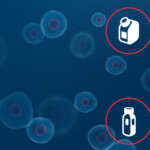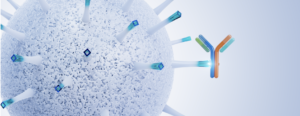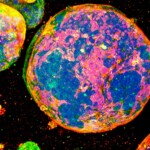
The Dish’s Weekly Biotechnology News Wrap Up – June 14, 2024
This week’s headlines include: Lilly’s donanemab sails through FDA meeting with 2 unanimous votes in favor, Innovative, fully defined hydrogel sets new benchmark in 3D Cell Culture, The Pharma Phoenix: BioXcel Therapeutics Uses AI to Repurpose Shelved Drugs, FDA’s Dr. Califf talks supply chains, clinical trial diversity, and America’s health, and GSK enhances oligonucleotide capabilities with $50m Elsie acquisition.
Podcasts:
Check out our podcast channel. We have over 100 great podcasts covering drug discovery, stem cell culture, upstream and downstream biomanufacturing and more! Click below to download from iTunes or Google play:
![]()
![]()
In Case You Missed It, Recent Articles on Cell Culture Dish and Downstream Column:
![]()
How AGC Biologics received approval from both US and European regulators for commercial manufacture of Lenmeldy – A cell-based gene therapy

In this podcast, we spoke with Luca Alberici, Senior Vice President and General Manager, Milan Facility, AGC Biologics about the road to their recent EC and FDA approval to commercially manufacture Lenmeldy™ and their future plans in cell and gene therapy…
Discover Optimal Cell Culture Conditions Efficiently with the New Online Cell Culture Select Tool
The ability to culture cells in vitro has allowed researchers to unravel the complexities of human biology, understand disease mechanisms, and advance drug discovery, which has led to countless breakthroughs in biomedical research. With thousands of cell lines in use today, each with their own distinct growth requirements, researchers face the challenge of selecting appropriate culture media and reagents. When working with a new cell line, it is common to consult the literature and draw upon the institutional knowledge of other labs to determine the best cultureware, media formulation, and subculturing or cryopreservation techniques. However, the lack of standardization across labs working with the same cell line poses challenges with respect to experimental reproducibility, emphasizing the importance of establishing cell culture best practices to ensure success…
cell lines in use today, each with their own distinct growth requirements, researchers face the challenge of selecting appropriate culture media and reagents. When working with a new cell line, it is common to consult the literature and draw upon the institutional knowledge of other labs to determine the best cultureware, media formulation, and subculturing or cryopreservation techniques. However, the lack of standardization across labs working with the same cell line poses challenges with respect to experimental reproducibility, emphasizing the importance of establishing cell culture best practices to ensure success…
The Ongoing Importance of Cell Line Authentication
 Cell lines are indispensable tools in both academic and industrial laboratories worldwide, forming the foundation of many breakthrough discoveries. However, cell line misidentification represents a longstanding and pervasive problem in basic and translational research that poses a significant threat to research reliability, integrity and reproducibility.
Cell lines are indispensable tools in both academic and industrial laboratories worldwide, forming the foundation of many breakthrough discoveries. However, cell line misidentification represents a longstanding and pervasive problem in basic and translational research that poses a significant threat to research reliability, integrity and reproducibility.
Studies estimate between 18-36% of cell lines utilized in biomedical research are contaminated and/or are completely misidentified1. As of January 2023, the ICLAC Register of Misidentified Cell Lines has documented 582 instances of cell line misidentification. Additionally, a study aimed at authenticating 278 human tumor cell lines used in China found that nearly 46% of the samples were either cross contaminated or misidentified2.A cell line becomes misidentified through cross-contamination, mislabeling, or other laboratory errors, meaning that it no longer corresponds to the original donor and may in fact come from an entirely different species, tissue or disease3…
Why Teamwork and Collaboration are Necessary for Successful Viral Vector Characterization
Characterizing viral vectors presents several challenges, primarily due to their larger size compared to other biologics like fusion  proteins, monoclonal antibodies, and small molecules. Their heterogeneity and complex structure further complicate characterization efforts. To address potential failures in the lab, meticulous planning is essential, including anticipating mistakes, allowing margins of error in assays, and careful experimental design. In a recent “Rewrite the Rules” vodcast, Jill Bradley-Graham from Sanofi, discusses why viral vector characterization is particularly challenging and why teamwork and collaboration are key. In the episode below, Jill shares the challenges that scientists in viral vector characterization face. She also explains why collaboration is key for newly emerging fields and provides insights on how to turn “failures” into opportunities…
proteins, monoclonal antibodies, and small molecules. Their heterogeneity and complex structure further complicate characterization efforts. To address potential failures in the lab, meticulous planning is essential, including anticipating mistakes, allowing margins of error in assays, and careful experimental design. In a recent “Rewrite the Rules” vodcast, Jill Bradley-Graham from Sanofi, discusses why viral vector characterization is particularly challenging and why teamwork and collaboration are key. In the episode below, Jill shares the challenges that scientists in viral vector characterization face. She also explains why collaboration is key for newly emerging fields and provides insights on how to turn “failures” into opportunities…
Simplifying Upstream Process Intensification with Alternating Tangential Flow Filtration- the XCell® ATF System
 The biomanufacturing industry is under increasing pressure to boost productivity and reduce the cost of biologics. Process intensification is an important strategy that offers many benefits toward meeting these goals. It provides the technical benefits of raising viable cell density, increasing product yield, and/or reducing batch length for the same productivity. From an operational perspective, process intensification offers a way to increase capacity while utilizing existing footprint and equipment. With these productivity improvements, process intensification also provides a path for reducing product cost and decreasing time to market, providing a business benefit as well.
The biomanufacturing industry is under increasing pressure to boost productivity and reduce the cost of biologics. Process intensification is an important strategy that offers many benefits toward meeting these goals. It provides the technical benefits of raising viable cell density, increasing product yield, and/or reducing batch length for the same productivity. From an operational perspective, process intensification offers a way to increase capacity while utilizing existing footprint and equipment. With these productivity improvements, process intensification also provides a path for reducing product cost and decreasing time to market, providing a business benefit as well.![]()
Getting the Most From Inline Buffer Formulation: MOTIV® Performance Data Review
In this mini-webinar Nainesh Shah, Sr. Application Engineer with Asahi Kasei discusses the benefits of inline buffer formulation and presents performance data on the MOTIV® inline buffer formulation system with case studies demonstrating the flexibility of MOTIV to create a wide variety of complex buffers.
and presents performance data on the MOTIV® inline buffer formulation system with case studies demonstrating the flexibility of MOTIV to create a wide variety of complex buffers.
The MOTIV system was originally launched in 2007 as IBD (Inline Buffer Dilution) and has since undergone several modifications and enhancements. In 2013, it evolved into a standard 3 pump system, with further improvements in 2015, including the addition of a reagent tracker for better chemical tracking. Subsequent upgrades in 2016 introduced a five pump system, and in 2018, larger custom units with six and seven pumps were developed. In 2020, IBD was officially renamed MOTIV, and in 2023, a single-use version of the system was launched to eliminate the need for SIP/CIP procedures.
Biopharmaceutical Manufacturing: Strategies for Navigating Raw Material and Process Changes
 Change in inevitable, especially in biopharmaceutical manufacturing. The biopharmaceutical industry is constantly evolving with advancements in processing technologies and raw materials providing continuous improvement opportunities for manufacturers to increase efficiency, reduce costs, and mitigate risks while maintain product quality and safety across a product’s lifecycle. That said, raw materials like chromatography resins used in downstream biopharmaceutical manufacturing of regulated products are subject to strict oversight. Any changes made to the manufacturing process must be carefully evaluated using both science- and risk-based approaches and reported to regulatory authorities to ensure the safety and quality of the final product is not affected…
Change in inevitable, especially in biopharmaceutical manufacturing. The biopharmaceutical industry is constantly evolving with advancements in processing technologies and raw materials providing continuous improvement opportunities for manufacturers to increase efficiency, reduce costs, and mitigate risks while maintain product quality and safety across a product’s lifecycle. That said, raw materials like chromatography resins used in downstream biopharmaceutical manufacturing of regulated products are subject to strict oversight. Any changes made to the manufacturing process must be carefully evaluated using both science- and risk-based approaches and reported to regulatory authorities to ensure the safety and quality of the final product is not affected…
Advancements in Buffer Management and Single Use Inline Buffer Formulation
In this podcast, we spoke with Nainesh Shah, Senior Application Engineer at Asahi Kasei Bioprocess about buffer management  including the benefits of inline buffer formulation, and single use inline buffer formulation systems.
including the benefits of inline buffer formulation, and single use inline buffer formulation systems.
We started the podcast by talking about how critical buffer management is to bioprocessing. Mr. Shah discussed how buffers are required in large quantities during the biomanufacturing process and that traditionally buffers were made in large tanks, stored, and used as needed. However, now real estate in the bioprocessing industry is at a premium and companies are looking to utilize new technologies that can reduce facility footprint. For buffer management, it makes sense to create buffer on demand to reduce the footprint dedicated to buffer production in the past.
Cytiva™ Protein Select™ Resin – A new affinity resin for recombinant proteins
 Cytiva™ Protein Select™ resin is an affinity chromatography resin for purifying recombinant proteins using the self-cleaving Cytiva™ Protein Select™ tag. This technology simplifies tagged protein purification when used in research and standardizes purification during process development and later phases of any protein that does not have an affinity binding partner.
Cytiva™ Protein Select™ resin is an affinity chromatography resin for purifying recombinant proteins using the self-cleaving Cytiva™ Protein Select™ tag. This technology simplifies tagged protein purification when used in research and standardizes purification during process development and later phases of any protein that does not have an affinity binding partner.
Webinar:
Optimization of a CD4+ T Cell Long-term Expansion Process in Stirred-Tank Bioreactors
 T cell lymphocytes play a central role in the adaptive immune response. They are an essential tool of adoptive cell therapy for the treatment of chronic viral infections and malignant diseases. However, the development of cell-based therapy products generally requires the production of a large quantity of high-quality viable T cells. Stirred-tank bioreactors can offer a suitable environment for the culture of T cells by providing homogeneous distribution of nutrients and gases, along with a high process control capability. Find out in this webinar how efficient long-term T cell culture can be achieved by using stirred-tank bioreactors.
T cell lymphocytes play a central role in the adaptive immune response. They are an essential tool of adoptive cell therapy for the treatment of chronic viral infections and malignant diseases. However, the development of cell-based therapy products generally requires the production of a large quantity of high-quality viable T cells. Stirred-tank bioreactors can offer a suitable environment for the culture of T cells by providing homogeneous distribution of nutrients and gases, along with a high process control capability. Find out in this webinar how efficient long-term T cell culture can be achieved by using stirred-tank bioreactors.
Headlines:
“Lilly’s donanemab sails through FDA meeting with 2 unanimous votes in favor,” Fierce Biotech
Eli Lilly’s Alzheimer’s disease treatment sailed through an FDA advisory committee meeting Monday, with panelists praising the therapy as innovative—while also cautioning about a lack of data on specific subgroups…
“Innovative, fully defined hydrogel sets new benchmark in 3D Cell Culture,” Press Release
 AMSBIO announce MatriMix – a groundbreaking 3D culture substrate. This pioneering hydrogel sets a new benchmark in the field, containing fully defined components, including medical grade collagens, laminin-511 E8 fragments, and hyaluronic acid. The high lot-to-lot consistency of MatriMix enables researchers to obtain highly reproducible results…
AMSBIO announce MatriMix – a groundbreaking 3D culture substrate. This pioneering hydrogel sets a new benchmark in the field, containing fully defined components, including medical grade collagens, laminin-511 E8 fragments, and hyaluronic acid. The high lot-to-lot consistency of MatriMix enables researchers to obtain highly reproducible results…
“The Pharma Phoenix: BioXcel Therapeutics Uses AI to Repurpose Shelved Drugs,” Inside Precision Medicine
Clinical trials are where most drugs go to die, but they don’t need to stay gathering dust on the shelves for an eternity or ultimately disintegrate. Derisking is always important in drug development, especially when dealing with the central nervous system (CNS), which has experienced lower success rates historically and, because of its complexity, takes longer to develop than other drug classes. A review from the National Institute of Aging (NIA) reported that the success rate of neuropsychiatric drug candidates entering human testing and consequently being approved is dramatically lower (8.2%) than for all drugs combined (15%)…
“FDA’s Dr. Califf talks supply chains, clinical trial diversity, and America’s health,” BIO News
Biopharma supply chains, streamlining regulation, and other critical issues came up when the leader of the U.S. agency regulating drugs spoke with the leader of the U.S. association representing biopharma drug makers at the world’s largest biotech conference…
“GSK enhances oligonucleotide capabilities with $50m Elsie acquisition,” PM Live
GSK has announced that it acquired US-based Elsie Biotechnologies and its oligonucleotide discovery platform for $50m. The deal comes just under a year after the companies entered into a research collaboration, which GSK said allowed it to “explore and validate” the technology. GSK will now integrate Elsie’s oligonucleotide discovery, synthesis and delivery technologies to enhance its platform research and development capabilities.